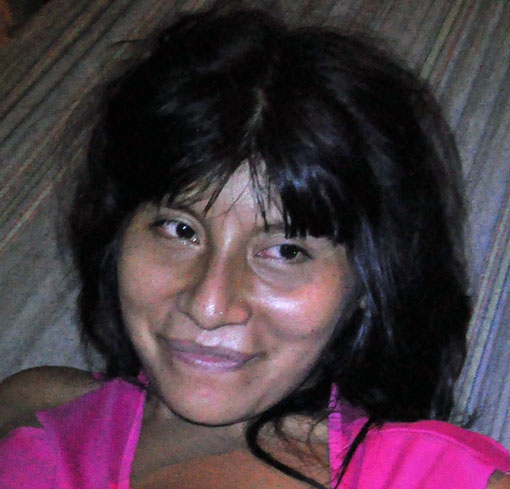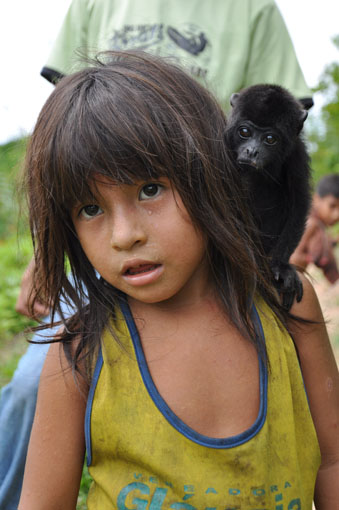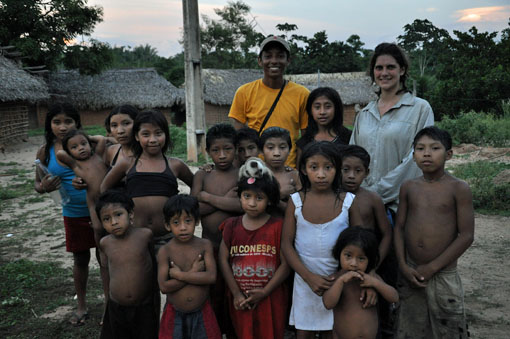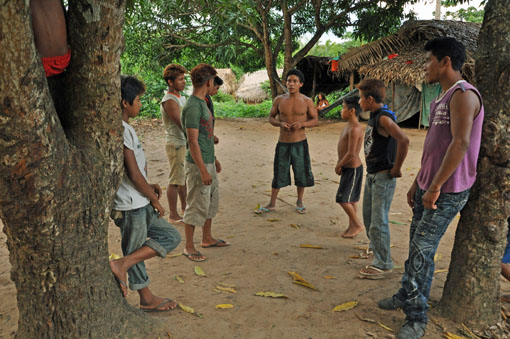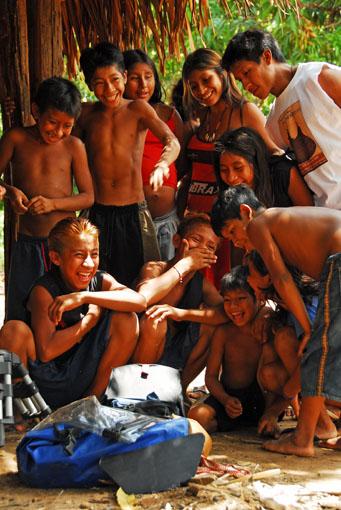Contact is Complicated
By Rachael Kinley, Researcher, Oceans and Jungles team
There have been a few times when people, and their stories, have really choked me up on location. Often it’s in interviews, when I get the chance to ask people about their lives, motivations and past experiences. The anthropologist in me loves this pause amongst the frenetic requirements of filming, being able to linger in the moment, and ask personal questions that wouldn’t come up in day to day small talk.
My most recent interview was with Pikawaja, a member of an Awá-Guajá community living in Maranhão, Brazil. Many of the people in this community were first contacted by the outside world in 1980, but some members of the village were only reached as little as three years ago. Since contact, it’s been quite a rapid, and sometimes rocky, process of assimilation. FUNAI and the government have given them motorboats, television, a satellite dish, running water, refrigerators, cattle, horses, a health clinic and schooling.
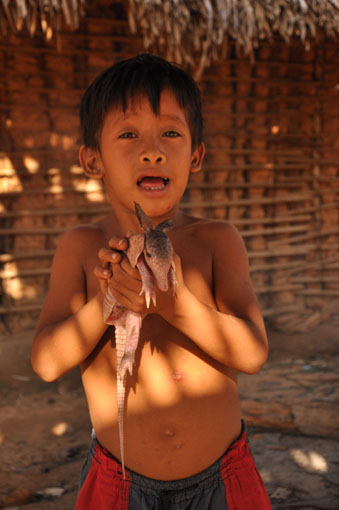 Although at first daunted and perplexed by the stark and dramatic alterations to their lives, most Awá-Guajá now seem excited by the change. Signs of the influence of wider Brazilian society are visible all over the village; children play by acting out scenes from Rambo, teenage boys sport bleached-orange mohawks and girls have started to pluck their eyebrows. However, the Awá-Guajá are in an odd situation where they are offered tastes of the world outside their reserve, but are discouraged from leaving to embrace these wholeheartedly.
Although at first daunted and perplexed by the stark and dramatic alterations to their lives, most Awá-Guajá now seem excited by the change. Signs of the influence of wider Brazilian society are visible all over the village; children play by acting out scenes from Rambo, teenage boys sport bleached-orange mohawks and girls have started to pluck their eyebrows. However, the Awá-Guajá are in an odd situation where they are offered tastes of the world outside their reserve, but are discouraged from leaving to embrace these wholeheartedly.
The childhood play and image-consciousness may be what’s seen on the surface, but I learn more about the increasingly complicated and more personal aspects of how the contact process has directly affected Pikawaja’s life.
Our interview begins slowly, following several relocations due to intrusive sounds from cockerels crowing and a pet howler monkey in desperate need to relieve itself. Once we reach a quiet spot, we (Pikawaja, myself, Willow Murton, who’s recording the sound and Antonio Santana, a linguistic graduate student who’s our key to Pikawaja’s thoughts) settle down to begin. As she starts, the softness of Pikawaja voice catches me off guard. When she speaks, she talks in stories, recounting events in a language where dialogue simply begins, without contextualisation.
Luckily Antonio is a master of the Guajá language and knows how to steer Pikawaja off one story onto another, to elucidate further information without breaking her flow. Her voice is quiet yet she doesn’t stutter or falter in her responses. Only once, she pauses mid-flow as her eyes glance to acknowledge her husband at the window behind me. He’s eager for Pikawaja to finish so that they can go hunting, but she stays to finish her stories. When he leaves, she recommences.
Pikawaja says that she was a young girl when the white people came and brought her family from the forest. She tells tales of gunfire and being scared that she would be killed. Without any change of tone discernable to my ear, she tells us of the personal tragedy of contact. After the white people came for them her parents developed a fever. With no medicine effective in treating the new diseases they were exposed to, they both died. She lost both parents and a brother.
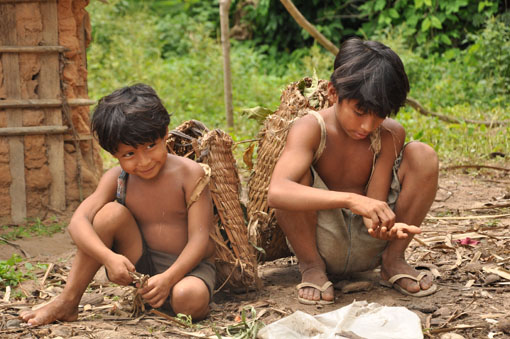 Later, when Willow and I read through the translation, we are both hit by a wave of sadness. We retire early to our hammocks and painful thoughts spin around our heads. Pikawaja is now back in the forest, at a hunting camp, where she feels far happier and at home compared to village life.
Later, when Willow and I read through the translation, we are both hit by a wave of sadness. We retire early to our hammocks and painful thoughts spin around our heads. Pikawaja is now back in the forest, at a hunting camp, where she feels far happier and at home compared to village life.
Pikawaja’s is not an unusual story. Louis Forline, a leading anthropologist on location with us, who was worked with the Awá-Guajá for almost 20 years, tells me that the first Awá community to be contacted lost 75% of its members. It was mainly the elders who died, until they started to build immunity to common diseases. The Awá-Guajá have now been left with a very young demographic. With so few elders around, and a sentiment of looking to the future, their chosen village leader, who sports a fetching orange Mohawk, must barely be out of his teens.
There are now just under 400 Awá-Guajá remaining in the world. It’s estimated that around 60 of them are still uncontacted and live in the forests around where we were filming. They are currently in danger from poachers, miners, loggers and cattle ranchers who have accessed their territories and are ransacking parts of their reserve. And with part of the Carajás Mining venture’s 910km railway running along their doorsteps they really are feeling the squeeze. While FUNAI, the Brazilian government’s National Foundation for Indians, has a policy of not contacting Isolated Indians, there is talk afoot that it may be in the best interests of these last true forest dwellers to integrate them into a village, perhaps even the one we’ve been filming in.
After my interview with Pikawaja I can now start to imagine what it will be like for these uncontacted people who still live nomadically in the forest, if they too are thrown into a world of horse riding, action movies, film crews and the common cold.
The issues go far deeper than I can begin to summarise here. As Indian policy in Brazil is in a constant flux, Louis believes that prospects for the Awá-Guajá future are hanging in the balance. He’s keen to raise awareness of the Awá-Guajá and their current situation; hopefully our programme will prompt further recognition of their lives. FUNAI and healthcare organisations are among those working hard for the welfare of the Awa-Guaja, but they do not always have all the resources they need.
It’s a complicated tangle being played out amongst Amazonian groups - how to balance the changing influential factors in life and identity amidst an ever-changing set of attractions and influences.
